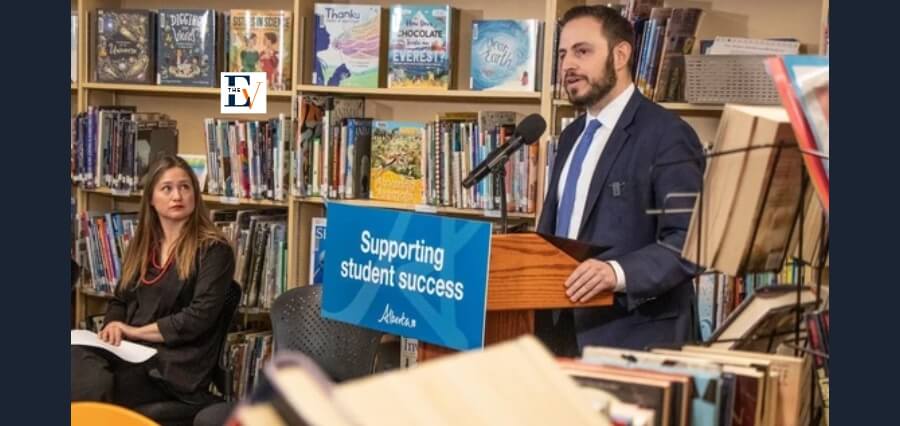A learning environment is an exciting journey. Unlike other places, including a family, peer groups, and employment where the norm includes two-way communication with either or both parties have the responsibility of taking steps for a positive outcome, here, despite the process having an equal contribution from both sides, i.e., the student and the teacher, when it comes to creating the right learning environment, the needle points firmly at the teacher. And that’s because the student is in the environment remains a recipient and, to an extent, a mute spectator who is only to imbibe and learn.
The strategies to Create a Supportive Learning Environment remain the exclusive right of the teacher and the institution. One of the promising signs of a good teacher in a learning environment can be judged by the way they go about setting the structures that go toward forming a supportive learning environment.
Let’s travel through some of the established strategies that promote an efficient learning environment.
Communicate Warmth and a Sense of Purpose
A learning environment should have a sense of happiness, humor, honesty, and most of all, humility to learn. With any of these missing, the learning environment becomes a drag which starts to grate the patience of both the learner and the teacher. While it may take time to come successfully on top with experience, there are a few things in people’s born and learned qualities that help make the environment warm and purposeful.
Amongst many, the following remain pertinent:
- Patience:
- Students, irrespective of age, come with baggage that may be inimical to learning. With patience, the teacher and the environment can get students to keep their baggage aside and open up to newer possibilities and work towards making those a reality.
- Making objectives clear.
- Grey areas remain inimical to the growth of learning irrespective of environments and institutions. One of the best ways to engender the right environment is by making objectives clear at the earliest. That said, it should be done in ways that don’t overwhelm or scare the learners into submission or leaving.
- Building the confidence in learners that resources exist to create the right environment. Key result areas and defining goals can overwhelm a new learner. It’s then entirely up to an efficient and concerned teacher to create confidence in learners that they shall never be left alone and that their abilities shall never be found wanting. On the contrary, the learning environment should make efforts to take everyone along.
Include Contemporary Topics to Gain and Retain Interest
Unless the subject itself is history or the pedagogy refers to the learnings that necessitate looking back in time, there shouldn’t be a reason for the learning environment that utilizes outdated content. These are times when things and more so technologies go extinct in the blink of an eye, and one is forced to stay abreast with the latest to stay relevant. It’s for this reason that a supportive learning environment should aim at teaching the latest and what’s likely to come up in the near future. Remaining contemporary is thus an important requirement to retain a supportive learning environment. In fact, it could be too much of a coincidence when one sees that the leading economies of the world invest their time and efforts in teaching the latest development of a particular discipline while taking just the needed amounts of effort on what’s gone in the past. Dwelling too much on the past is a sure way of creating a disgruntled, disparate environment that leads its learners nowhere meaningful.
Be Realistic About the End-Result
Don’t grow apple trees if you desire mangoes. It could be a sheer waste of time, money, patience, and, most of all, an institution’s goodwill. Not all learning environments are designed to produce the same kind of output. That said, with a certain clarity of purpose and understanding of ground realities, one can produce better than expected results. This, in fact, has been a worldwide phenomenon, especially when one sees poorer nations. They may not have produced world-class brains, but in some cases, they have produced adequate numbers of those who know how to use their brains with a view to bringing change that could be slow but steady.
Use Important Means, Introduce Flipped Classrooms
A teacher should ideally be there to guide and not goad. If adhered to in the right spirits, this could open ways to a new form of teaching called “flipped classrooms,” where the whole idea of educating is flipped. The teacher becomes the student, and the students use all possible resources, including open books, libraries, real-life experiences, and the like to come up with answers that the teachers may put forth. A life-changing experience, it may not be possible for every subject. Nevertheless, the learning environment ought to incorporate the same to the extent possible for the long-term good of students and learners.
Take Charge of Laggards
A learning environment is as successful as its most laggard learners. And when the laggards make up the most, the environment doesn’t have an option but to slow down and cater to the slowest. While this may seem to slow down the whole order, in the larger scheme of things, it teaches the brightest learner an important lesson. That you don’t move ahead if you have those who either pull you back or don’t let you move ahead. If learning isn’t a race, teaching and helping laggards could possibly be the best teacher for the brightest of students. The ancient way of education worldwide ensured that everyone moved at the same pace, which sometimes was the pace of the slowest.
Remember, your best efforts will still be offset by laggards and failures. Don’t take it to heart. Use it to do better.
And when one is done with formulating strategies for the creation of a supportive learning environment, its time to understand that in every learning order anywhere in the world, there shall be those who can be counted as the black sheep and who, despite the best efforts of the environment and the teachers are destined to go out of the system as failures. That is nature, and one has to live with it without getting disturbed in any way!
Learning is a never-ending activity. The most learned also get to learn something new every day. It’s for this reason that strategies to create a supportive learning environment can never be a static activity with little change. On the other hand, to cater to the widest audience of learners, it ought to remain dynamic and changes that adjust with times and circumstances.






